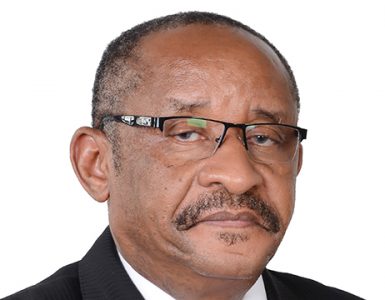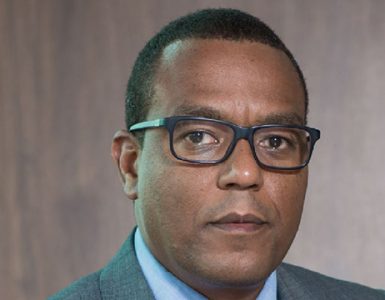Industry Spotlight: Renewable Energy Industry
Reaching regional integration, poverty reduction and sustainable development have been an important agenda for African countries and in particularly with SADC countries. The infrastructure development is among the priority intervention areas which include, road, communication, transport, water, and energy. These constitute a major component for African governments in terms of development strategies. These sectors have been also attracting investment into the region[24]. The objective is to improve competitiveness and promote trade in order to create integrated regional value chain, cost effective infrastructure system and providing necessary links between regional markets, and produce valued added products[25].The growing demand for natural resources and for other alternative sources of raw materials from African countries have contributed to high commodities prices such as oil, copper, ferrous and non-ferrous metals as well as precious stones, of which some of these African resource-rich countries have benefited for high GDP rates. For example, between 2009 and 2015, Angola recorded an average of 4.2% GDP growth, The Democratic Republic of Congo reached an average of 6.9% GDP growth, and Zambia averaged of 6.4% GDP growth[26]. Additionally, this has led to new large inflow of capital coming from traditional investors (e.g., EU and USA), and other new emerging investors, particularly China, and other Asia countries (e.g., Japan, India, Brazil) dived into Africa’s extractive industries sector[27]. In 2015, it has been estimated that a total of USD 83.4 billion investment came from outside into Africa, of which USD 20.9 billion was China’s fund[28]. This represents a share of 25.0% of the total fund.
Energy remains among the biggest challenges faced by most of SADC countries. Member states of SADC clearly recognised that energy plays an important role in industrial development – industrialisation and in fostering regional integration[29]. The SADC Energy protocol, the SADC Regional Infrastructures Development Master Plan and, alongside with the Regional Indicative Strategic Development Plan called for an industrialisation strategy as the way of diversifying economies, poverty reduction and promote regional growth[30]. Consequently, energy seems to be one of the sectors to achieve these goals. As it stands at the moment, most of SADC countries are still struggling with meeting their demand in energy. To remediate the energy issue, renewable energy become as an alternative and existing sustainable sources of energy solution which could be exploited, and bring massive collaboration in promoting regional power pools[31]. The Chinese investment has expanded in Africa into various sectors such as energy, communication, transport, water etc[32]. Between 2000 and 2012, it has been estimated that Chinese development finance for the energy sector reach approximately a total of more than USD 16.0 billion. Making China as the largest development partner in the sector, compared to EU with USD 7.0 billion, and the USA with USD 0.5 billion according to the aid data figures[33].
Considering that, the renewable energy in Africa have also brought up an investment estimated at USD 8.0 billion in 2014, compared to USD 5.3 billion in 2013, of which 3.0% represented the global investment. From this investment, USD 5.8 billion accounted for three SADC countries which included South Africa, Mauritius and Tanzania[34]. While South Africa took just alone 95.0% of the investment. For example, in Tanzania, the National Development Corporation decided to build a 50.0 MW wind farm wind project in Singida region (West of Dar es Salaam) with financing from EXIM Bank of China[35]. Furthermore, Malawi’s government received a Chinese funded project to provide 250 solar street lights and 533 sets of mobile solar Photovoltaics (PV) systems for rural areas, directed to health clinics in 2015[36]. Additionally, between 2011 and 2015, South Africa commissioned/targeted a total of 2,660.0 MW wind projects and the solar PV projects which accounted for 1,899.0 MW, and CSP for 400.0 MW. This has been achieved through the Renewable Energy Independent Power Producers Procurement Programme, which enable to attract more investment in the renewable energy sector from private sectors, multinational manufacturers companies to local private banks[37]. All of these, seem to tell us that public and private sector investment from China has grown over the past decades, and targeting various infrastructure development projects in SADC[38].
The China EXIM Bank have been supporting a number of energy projects in SADC member states, which include green energy development. In terms of foreign direct investment (FDI) flow by sector in SADC, the coal, oil and natural gas sector has attracted more FDI, accounted for USD 109.2 billion, compared to USD 11.3 billion in the renewable energy sector. The metals and building and construction materials have attracted investment respectively of USD 59.1 billion and USD 9.0 billion[39]. The sector of communication accounted for an investment of USD 13.0 billion[40]. This reveals that, coal, oil and natural gas sector continue to be the major sectors attracting most of the investment in the SADC region, and in Africa in general.
China’s cooperation and investment in African continent have prominently grown over time, and created a dramatic shift from the traditional “African trade partners” in terms of trade and investment perspectives[41]. Sino-Africa relations seems to be for African government as an opportunity for business and an alternative development model of sources of finance, moving away from the eternal dependency on institutions such as the International Monetary Fund and World Bank, and Western foreign investment and development assistance which is usually attached with conditionalities[42]. To attract more investment and fostering long term growth in SADC region, infrastructure and skills development are necessarily required. Most investment in SADC region are oriented to natural resources (extractive) and services sector. However, there is also need to diversify investment in renewable and sustainable resources, of which will drive the domestic markets growth and achieve higher levels of development[43]. In addition, SADC regional trade should be moving to the direction of competitive value addition, rather than only based production.
By Serge Hadisi
[24] SADC 2012. Regional Indicative Strategic Development Plan, Southern African Development Community: Gaborone. Available At: https://www.sadc.int/ [Last accessed: 27 June 2018]; Cisse, D. 2015. China’s Engagement in Africa: What are the Potential Impacts on Africa’s Regional Integration?, University of Alberta: Edmonton. Available At: http://www.tips.org.za/ [Last Accessed: 27 June 2018].
[25] SADC 2012. Regional Indicative Strategic Development Plan, ibid.
[26] IMF 2018. Regional Economic Outlook: Sub-Saharan Africa Domestic Revenue Mobilisation and Private Investment, International Monetary Fund: Washington, D. C. Available At: https://www.imf.org/ [Last Accessed: 15 July 2018]; Edinger, H. & Pistorius, C. 2011. ‘Aspects of Chinese Investment in the African Resources Sector’, The Journal of The Southern African Institute of Mining and Metallurgy, Volume 111, pp.: 501-510. Available At: https://www.saimm.co.za/ [Last Accessed: 19 June 2018].
[27] Gualberti, G., Bazilian, M., & Moss, T. 2014. Energy Investment in Africa by the U.S., Europe and China, International Association for Energy Economics: Cleveland. Available At: https://www.iaee.org/ [Last accessed: 19 June 2018]; Edinger, H. & Pistorius, C. 2011. ‘Aspects of Chinese Investment in the African Resources Sector’, ibid.
[28] Wu, Y. & Bai, S. 2017. China’s Infrastructure Development Strategy in Africa: Mutual Gain?, on the International Centre for Trade and Sustainable Development Website, viewed on 2 September 2018, from https://www.ictsd.org/.
[29] Mutanga, S. & Simelane, T. 2015. Electricity Generation: A Driver of SADC Regional Integration?, Economic Policy Forum and South African Institute of International Affairs: Johannesburg. Available At: https://economic-policy-forum.org/ [Last Accessed: 2 September 2018].
[30] SADC 2016. SADC Energy Monitor 2016: Baseline Study of the SADC Energy Sector, Southern African Development Community: Gaborone. Available At: https://www.sadc.int/ [Last Accessed: 16 July 2018].
[31] Mutanga, S. & Simelane, T. 2015. Electricity Generation: A Driver of SADC Regional Integration?, ibid; SADC 2016. SADC Energy Monitor 2016: Baseline Study of the SADC Energy Sector, ibid.
[32] Gualberti, G. et al. 2014. Energy Investment in Africa by the U.S., Europe and China, ibid.
[33] Gualberti, G. et al. 2014. Energy Investment in Africa by the U.S., Europe and China, ibid.
[34] REN21 2015. SADC Renewable Energy and Energy Efficiency Status Report, Renewable Energy Policy Network for the 21st Century: Paris. Available At: http://www.ren21.net/ [Last Accessed: 16 July 2018].
[35] REN21 2015. SADC Renewable Energy and Energy Efficiency Status Report, ibid.
[36] REN21 2015. SADC Renewable Energy and Energy Efficiency Status Report, ibid.
[37] REN21 2015. SADC Renewable Energy and Energy Efficiency Status Report, ibid.
[38] SADC 2016. SADC Energy Monitor 2016: Baseline Study of the SADC Energy Sector, ibid.
[39] Bezuidenhout, H. 2015. SADC Investment Perspectives in a Changing International Investment Landscape, South African Institute of International Affairs: Johannesburg. Available At: http://www.saiia.org.za/ [Last Accessed: 19 June 2018].
[40] Bezuidenhout, H. 2015. SADC Investment Perspectives in a Changing International Investment Landscape, ibid.
[41] Gualberti, G. et al. 2014. Energy Investment in Africa by the U.S., Europe and China, ibid.
[42] Ayodele, T. & Sotola, O. 2014. China in Africa: An Evaluation of Chinese Investment, Initiative for Public Policy Analysis: Lagos. Available At: http://www.ippanigeria.org/ [Last Accessed: 19 July 2018]; Gualberti, G., Bazilian, M., & Moss, T. 2014. Energy Investment in Africa by the U.S., Europe and China, ibid.
[43] Bezuidenhout, H. 2015. SADC Investment Perspectives in a Changing International Investment Landscape, ibid.




























